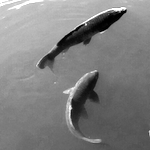Animal flapping flight is notoriously difficult to analyze and so models have made drastic assumptions about actuation and force coefficients. The model most used by biologists is the quasi-steady actuator disc approach adapted for bird flight by Colin Pennycuick (1968). Considering the representation of the bird as a point mass, a wingspan it has been unexpectedly successful in predicting flight behaviors and power required to fly. However, as more experiments have accumulated is has also become clear that it has shortcomings. For instance, unsteady aerodynamic effects such as clap-and-fling, flip, and delayed stall with leading edge vortices first identified for insect flight also occur in larger flyers such as bats and birds. Also, the flight endurance feats of some migratory birds have by far surpassed our imagination, and so the performance envelope of animal flyers has moved beyond model predictions. Some of these discrepancies relate to uncertainties surrounding the body drag coefficients, partly due to experimental obstacles and the range of Reynolds numbers where birds operate. Improved understanding of animal physiology also helps closing the gap between models and reality. As new empirical findings about real birds and bats flight performance have appeared, also flight models of especially migratory flight capacity have been revised. However, although methodological advances have partly resolved some of the shortcomings with the first-generation models, flapping animal flight still defies a complete analytical solution, although computational approaches have become feasible. I will highlight actual animal flight performance, the development of flight models, and point out some open questions.

 PDF version
PDF version
